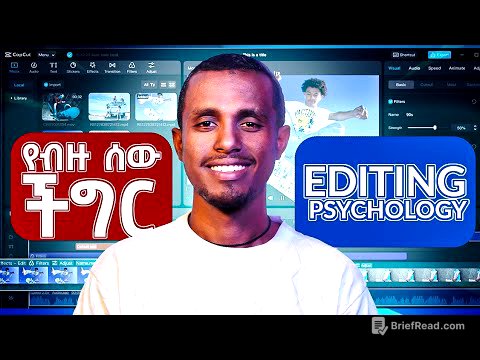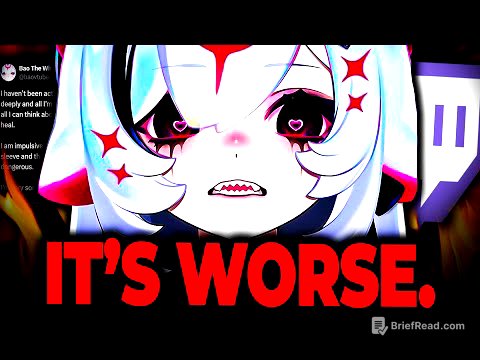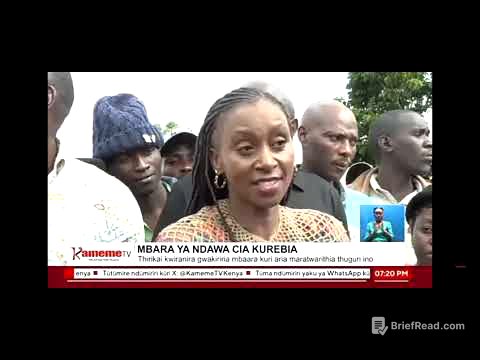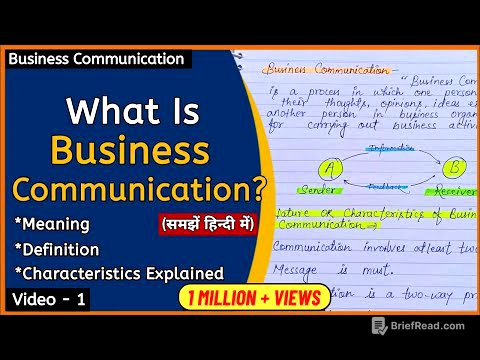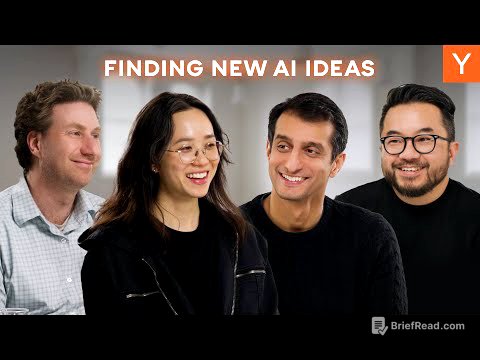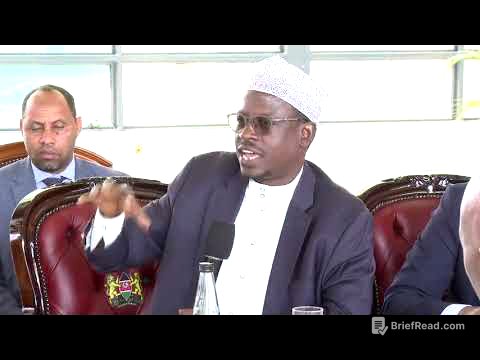TLDR;
This video from SPM IAS Academy provides an analysis of newspaper articles from July 8, 2025, covering topics relevant to the IAS exam. It discusses India's relations with South American countries, particularly Brazil and Argentina, examining historical ties and current collaborations. The video also addresses a recent World Bank report ranking India as the fourth most equal country globally based on the Gini coefficient, while also discussing the limitations of consumption-based inequality measures. Furthermore, it introduces the Simonyi Survey Telescope, highlighting its capabilities and potential contributions to astronomical research. Finally, the video explores the applications of Artificial Intelligence in Assam across various sectors like agriculture, healthcare, and cultural preservation, and the WHO's 3 by 35 Initiative aimed at increasing taxes on health-damaging products.
- India is focusing on strengthening relationships with South American countries, particularly Brazil and Argentina, to promote South-South cooperation and emerge as a leader of the Global South.
- Despite being ranked as the fourth most equal country globally based on the consumption-based Gini index, wealth inequality remains high in India.
- AI is being utilized in Assam to improve agriculture, healthcare, and cultural preservation.
- The WHO's 3/35 Initiative aims to reduce the consumption of harmful products like tobacco, alcohol, and sugary drinks by increasing taxes on them.
Introduction [0:00]
The video introduces the newspaper analysis for July 8, 2025, by SPM IAS Academy. Viewers are informed that they can download a PDF version of the analysis via a link in the comment section. The session will cover several key topics extracted from the day's news.
Topics of the day [0:14]
The presenter lists the topics to be covered in the newspaper analysis, which include India-South America relations, India becoming the fourth 'most equal' country globally, the Simonyi Survey Telescope, AI application in Assam, and the 3 by 35 Initiative.
India- South America relations [0:19]
The discussion focuses on India's relations with South America, particularly Brazil and Argentina, in the context of GS Paper 2 (International Relations). Prime Minister Narendra Modi's visits to Ghana, Trinidad and Tobago, Argentina, and Brazil are highlighted as efforts to promote South-South Cooperation and India's role as a leader in the Global South. The presenter notes that this area is often neglected in exam preparation, making it crucial to understand these relationships.
The historical context of India-Brazil relations is traced back to the Portuguese colonial era, noting the economic ties between Goa and Brazil. After independence, diplomatic relations were established in 1948, but deteriorated after India's liberation of Goa in 1961. Relations improved in the 1990s due to the Washington Consensus and economic liberalization. Brazil is now India's largest trading partner in South America, and there is defense cooperation through a two-plus-two dialogue. Both countries collaborate in the International Solar Alliance and the Global Biofuel Alliance. They are also part of BRICS and G20, working towards WTO reforms favorable to developing countries. India and Brazil are also part of the G4 grouping, which aims to bring reforms to the UNSC. The Coffee Club, an informal group including Italy, Pakistan, Argentina, and Korea, opposes the G4's demands.
Prime Minister Modi's recent visit to Argentina marked the first visit by an Indian Prime Minister in 57 years. India and Argentina have completed 75 years of diplomatic relations in 2024. Argentina, along with Brazil, Bolivia, and Chile, is an important source for lithium, and India has signed an agreement with Argentina for joint lithium extraction, which is crucial for green energy technologies. India is Argentina's fifth-largest trading partner.
India and South America are natural partners in the quest for a multipolar world, with a history of supporting this idea even during the Cold War through the Non-Alignment Movement. India has started the Voice of Global South Summit to promote the idea of the Global South, with many South American countries participating. Strategic Convergence IBSA (India, Brazil, South Africa) focuses on South-South cooperation and building consensus on global issues.
India becomes the fourth ‘most equal’ country globally [10:18]
The video addresses a recent World Bank report stating that India is the fourth most equal country globally based on the consumption-based Gini index, which is calculated to be 25.5. The Gini coefficient is explained as a measure of inequality, with 0 representing perfect equality and 1 representing perfect inequality. The Lorenz curve is used to illustrate the distribution of wealth and population.
The presenter notes that accounts of around 56 crore people have been opened under PM Jan Dhan Yojana, leading to financial inclusion. Direct Benefit Transfer (DBT) and schemes like Pradhan Mantri Garib Kalyan Anna Yojana, which provides 5 kg of food grain free of cost, have also contributed to poverty reduction. Traditional artisans are being trained under the PM Vishwakarma Yojana to promote self-employment.
However, the presenter also explains that inequality is less visible in India due to the consumption-based nature of the Gini index. Rich people tend to save and invest more, and underreport consumption. The data of the top 1% rich people is not included in surveys like NSS and PLFS. Regional and class-based disparities are also difficult to measure. While the consumption-based Gini index may show less inequality, income-based and wealth-based inequality remain high. The Wealth Inequality Report 2022-23 indicates that the top 1% of people generate 22.6% of the country's income and own approximately 40% of the wealth. Approximately 23 to 24 crore people in India face extreme poverty.
Economist Thomas Picketty suggests imposing wealth tax to deal with generational inequality.
Simonyi Survey Telescope [20:58]
The Simonyi Survey Telescope, located at the Vera C. Rubin Observatory in Chile's Cerro Mountain, is the world's largest digital camera-equipped telescope. This ground-based telescope provides a broader view of the sky compared to telescopes like Hubble or James Webb. It can capture a section of the sky about 40 times larger than a full moon at one time and can reposition itself in under 10 minutes. Equipped with a 3.2-gigapixel CCD camera, it surveys the entire visible sky every few nights. The Rubin Observatory will explore the Milky Way Galaxy, study dark matter energy, and census the solar system, identifying new asteroids and comets.
AI application in Assam [22:58]
The video discusses the applications of Artificial Intelligence in Assam across various sectors. In agriculture, AI is used in rice farming in Dhemaji to analyze soil reports, monsoon data, and satellite images, providing farmers with AI-based suggestions on when to sow flood-resistant rice varieties. In tea gardens, AI-based detection systems in Jorhat can detect fungus infections in tea crops, and drones are used in Debruger to identify blights and nutrient deficiencies in plants. In the health sector, AI is used in rural health clinics in Majuli to detect TB reports from chest scans, assisting local community nurses. AI systems also provide localized language reminders for infant vaccination schedules. AI is also used to preserve folk tales in the Karvi region and to develop digitalized catalogs of Gamosa and Iri Muga in the Suwalkachi region. Virtual methods using AI allow users to try Mekala Chadar by uploading their photos. Assam Scale University is training children in AI through the India AI Plan.
3 by 35 Initiative [26:55]
The 3/35 Initiative by WHO aims to increase taxes on tobacco, alcohol, and sugary products by 50% by 2035. The goal is to reduce the consumption of these health-damaging products and use the increased tax collection to strengthen health infrastructure. The initiative suggests increasing taxes in such a manner that the real price rises by 50%.
Answer to the previous day's questions [27:56]
The presenter reviews the answers to the previous day's questions. The second statement regarding crypto currency in BRICS is incorrect. The second statement related to Cooperatives in India is wrong, because there is a separate Ministry of Cooperatives. The second statement related to tsunami is wrong, because under sea earthquake will not necessary every time it will lead to tsunami. In Zoster disease, the third statement is wrong, because Zootic diseases are those which spread from animals to humans, not from humans to animals.

